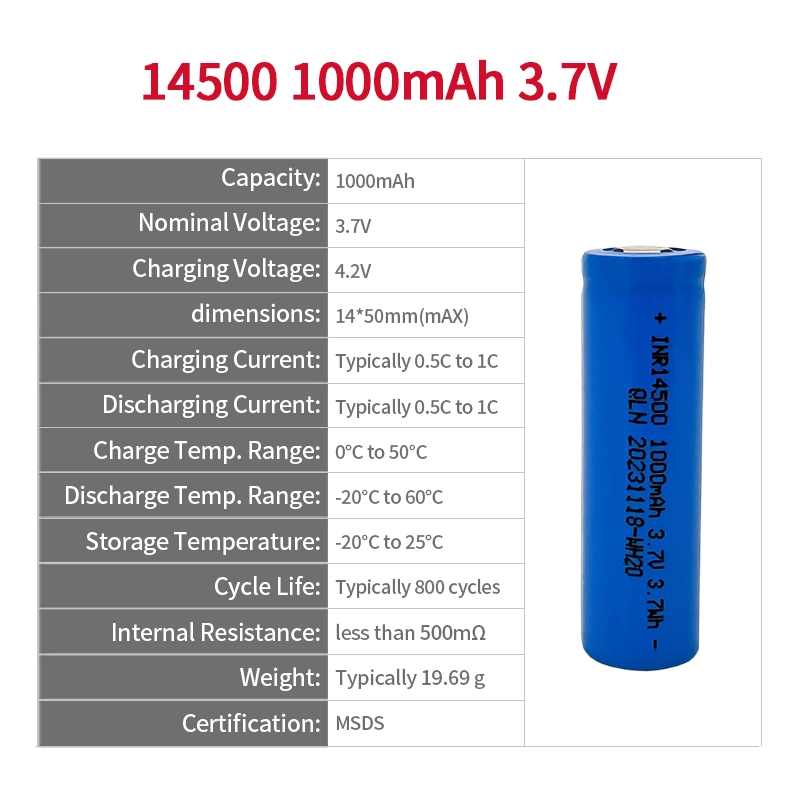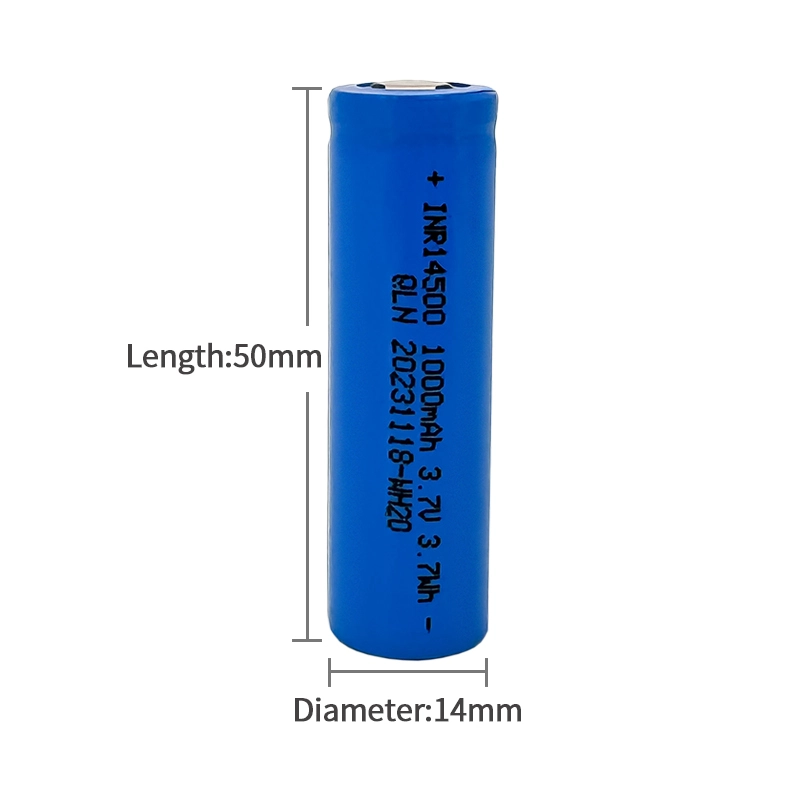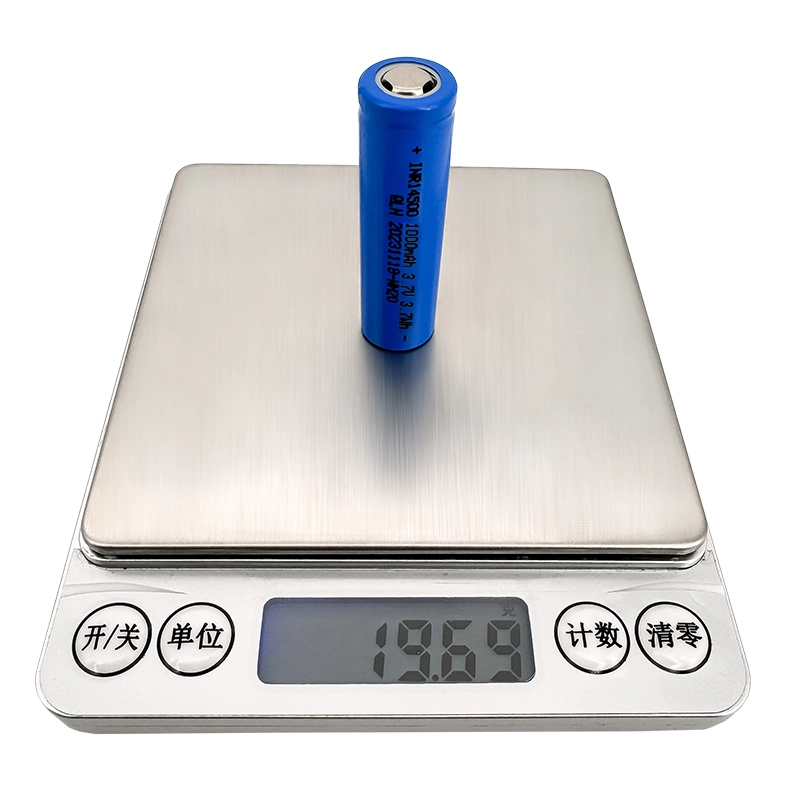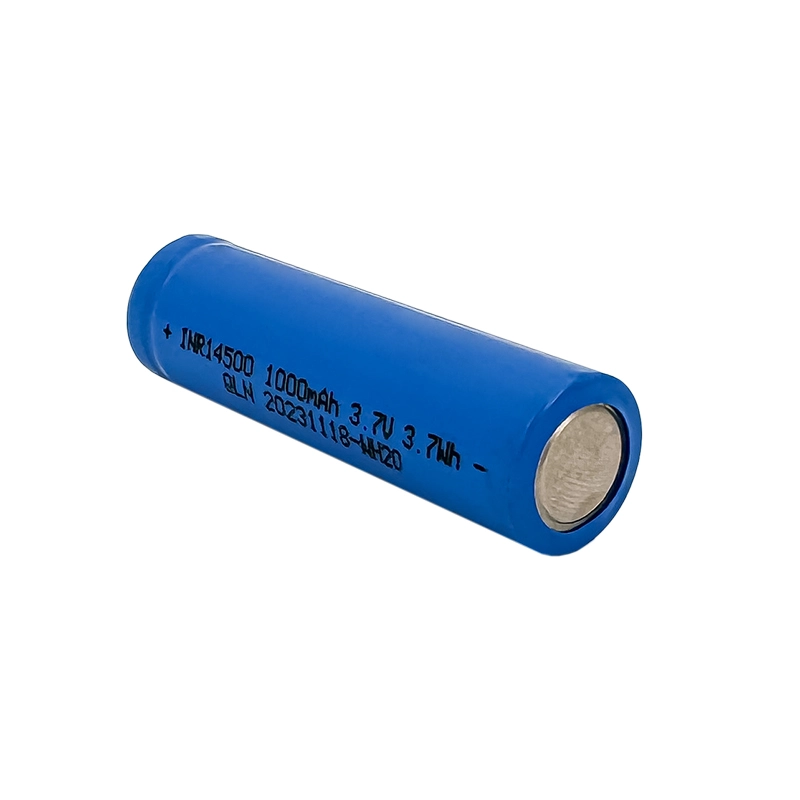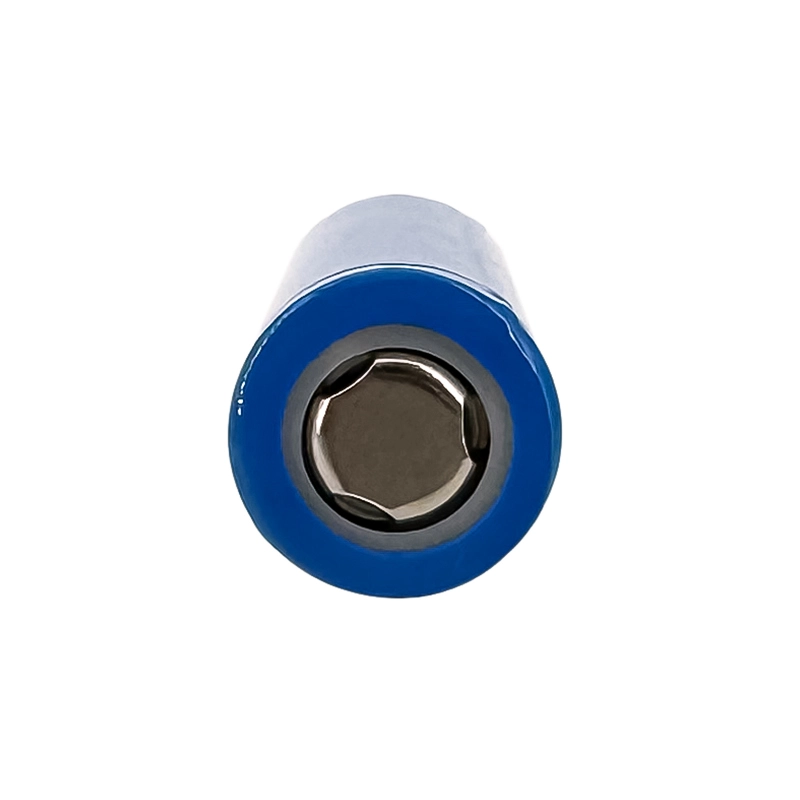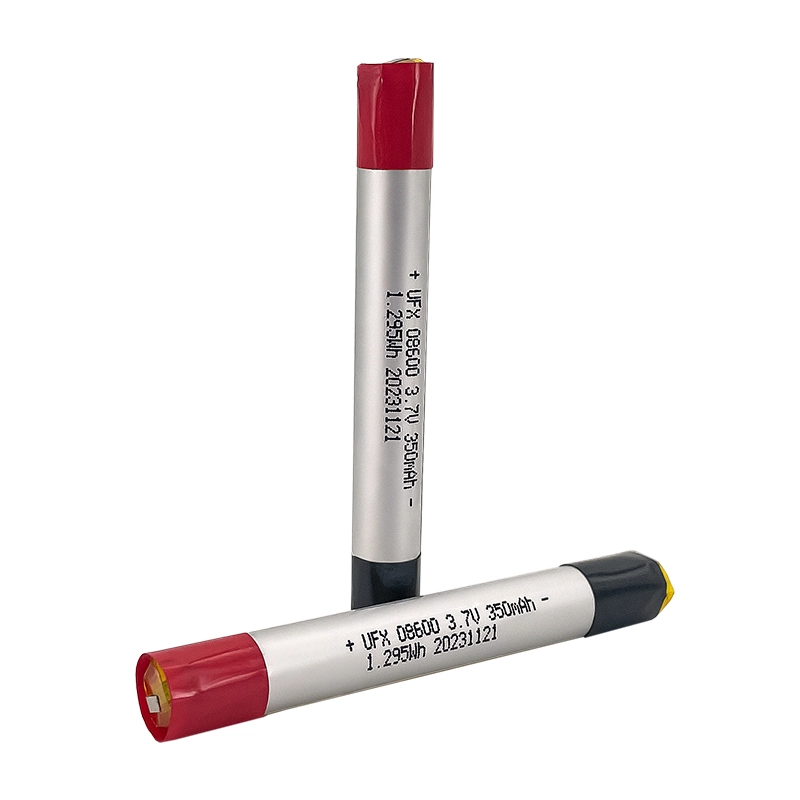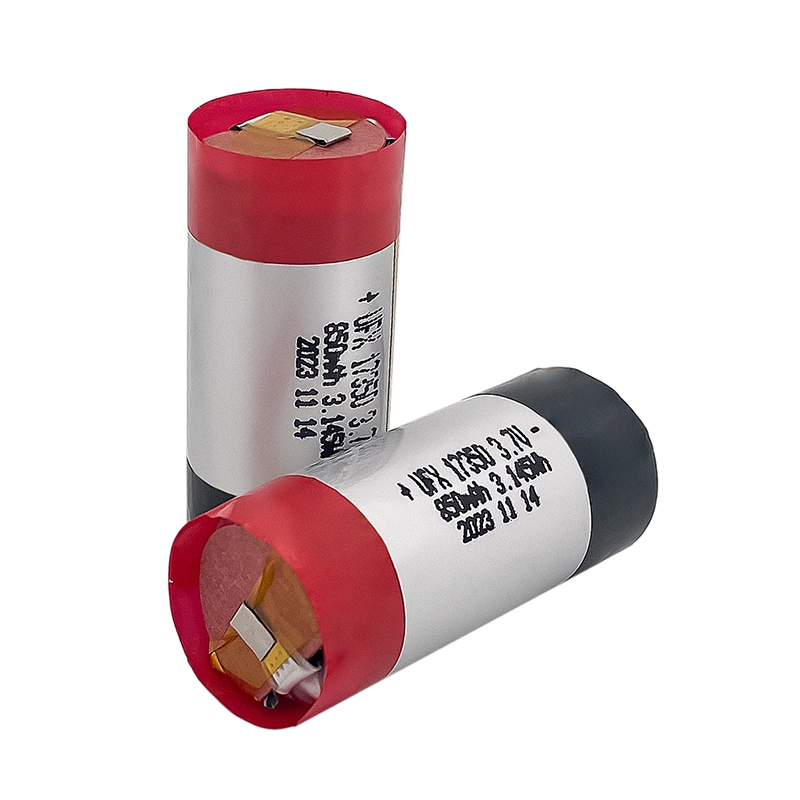-
Product Details
-
Specs
-
Content
-
FAQs

Compact High-Energy 3.7 V 1000mAh 14500 Battery
Need a space-efficient, reliable power cell for industrial or consumer devices? Ufine’s 3.7 V 1000mAh Cylindrical Battery 14500 delivers consistent output and compact form factor. With a nominal voltage of 3.7V and rated capacity of 1000mAh, this 14500 li ion battery is engineered for applications where size, steady discharge and predictable lifecycle matter.
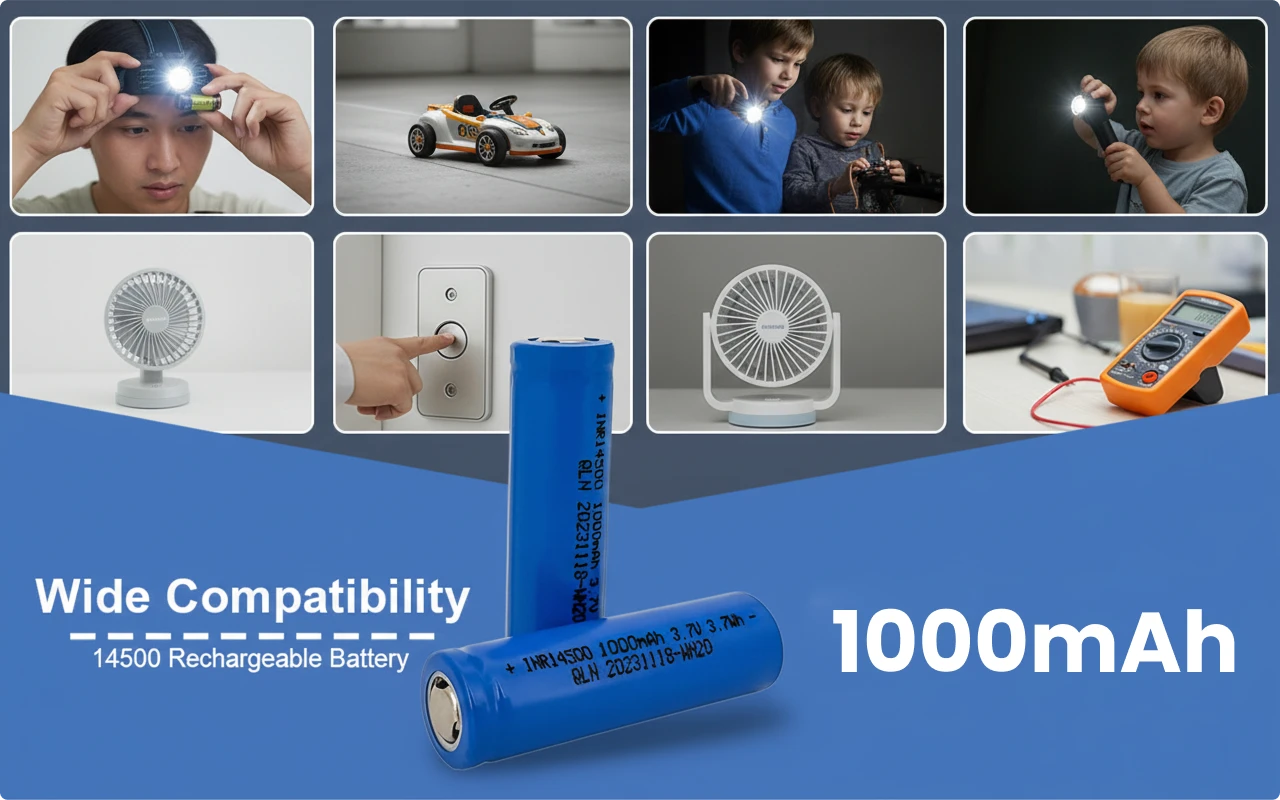
Performance Overview — 14500 Battery
Key performance attributes across discharge behavior, longevity, temperature tolerance and storage stability for the 3.7 volt 1000mah battery cell.
- Discharge Stability
- Cycle Endurance
- Temp Performance
- Shelf Retention
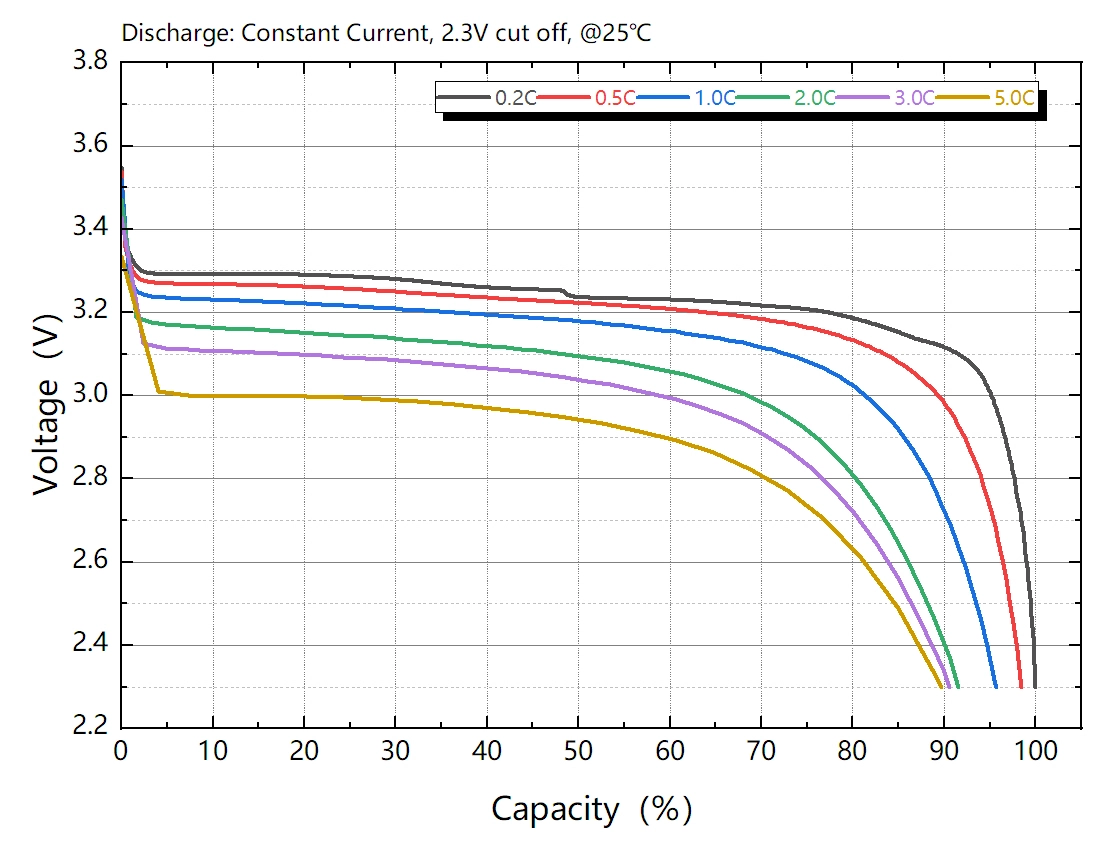
Predictable Discharge for Compact Devices
This 14500 lithium rechargeable battery maintains steady voltage under typical 0.5C loads and supports bursts up to 1C, making it suitable for handheld instruments, consumer electronics, and telemetry modules that require reliable short-term power delivery.
- Rated nominal voltage: 3.7V, cutoff recommended: 2.75V
- Designed for standard continuous current of 0.5C (≈500mA)
- Capable of safe short-term discharge up to 1C for peak demands

Engineered for Repeated Use
Optimized cell chemistry and controlled assembly reduce early capacity fade. The 14500 battery achieves industry-competitive retention across hundreds of cycles—suitable for products with regular recharge patterns.
- Typical cycle performance: 100 cycles ≥92% capacity retention
- 300 cycles ≥88%, 500 cycles ≥80% under standard test conditions
- Stable internal resistance supports uniform performance across batches
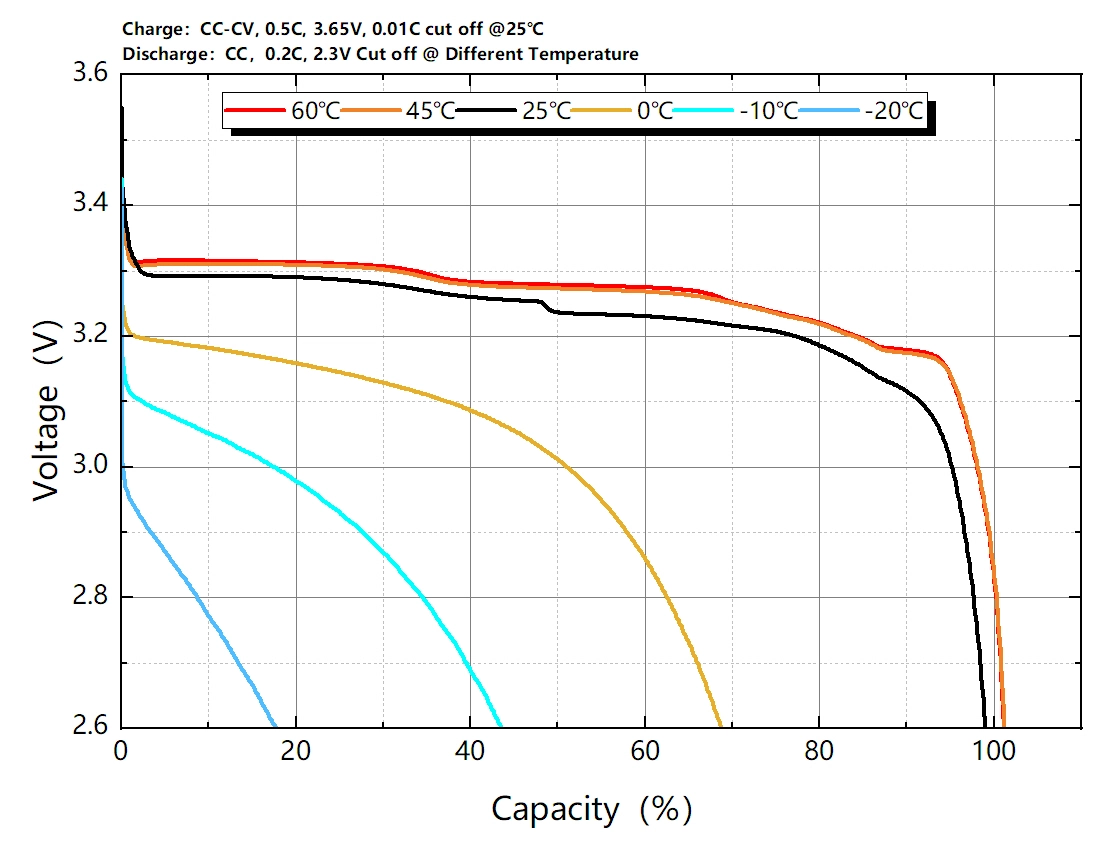
Reliable Across Common Operating Climates
Designed to operate in a wide range of real-world temperatures, the cell retains discharge capacity and safety margins for both indoor and many outdoor deployments.
- Recommended charging: 0℃ to 50℃
- Discharge operational range: -20℃ to 60℃
- Special low-temp or high-temp variants available for extreme-environment projects
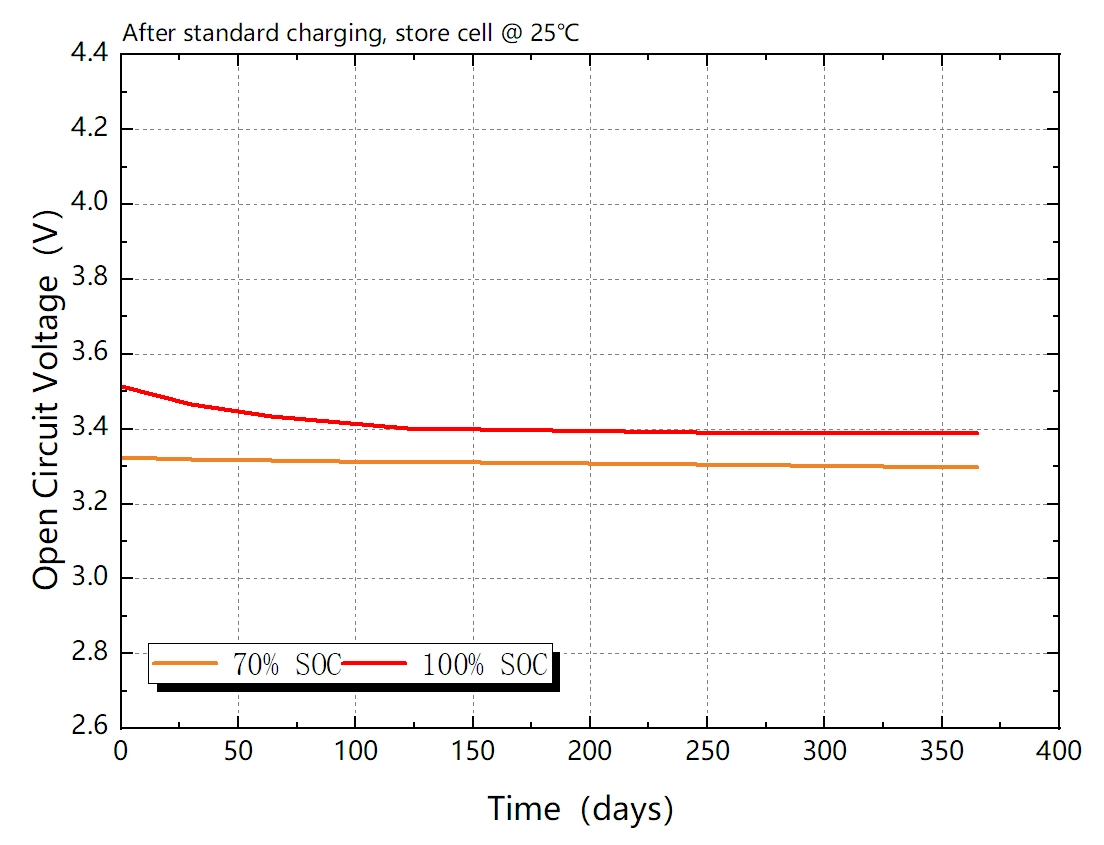
Low Self-Discharge for Inventory and Spare Cells
The 14500 lithium cell is built to retain charge during storage, reducing inventory maintenance for OEMs and making it a practical spare for field-replaceable units.
- Optimized for minimal capacity loss during shelf storage at ambient conditions
- Good option for devices with intermittent use or seasonal operation
- Storage recommendations provided to maximize retained capacity over months
Core Advantages of the 3.7 V 1000mAh 14500 Cell
Designed for professional customers who demand predictable performance, this 14500 lithium battery emphasizes output consistency, low internal resistance and scalable production quality.
Why engineers choose this 14500 lithium battery
Below are the primary strengths that make this cell fit for compact devices and high-volume productization.
- Low internal resistance (<25mΩ) for efficient energy delivery and reduced heat under load
- True 1C peak/current handling for controlled surge requirements in handheld equipment
- Consistent batch-to-batch IR and capacity—simplifies system-level power budgeting
- Proven lifecycle stability: predictable capacity retention up to 500 cycles under recommended conditions
- Lightweight cylindrical format (~20g) for space-constrained product designs
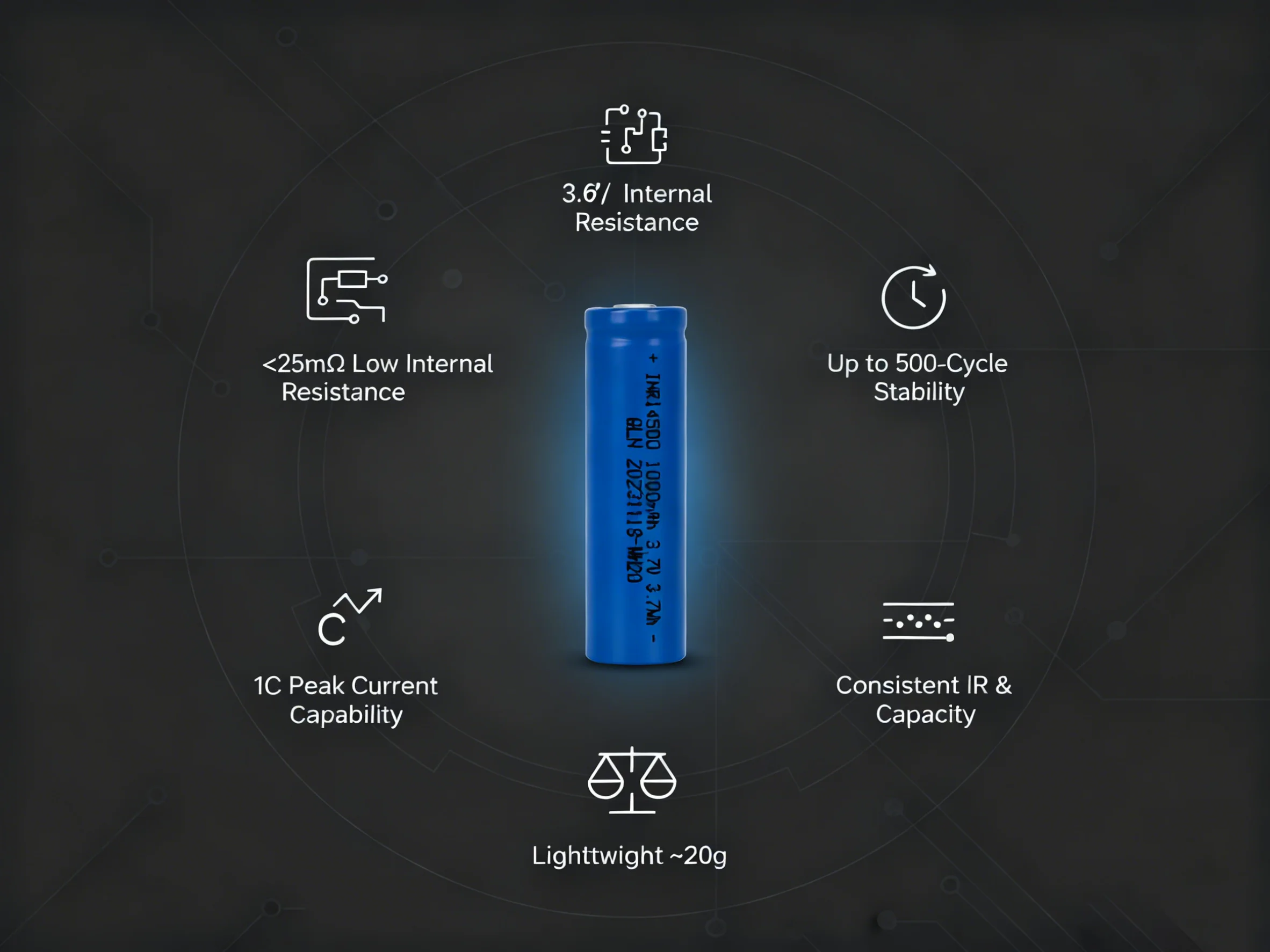
Manufacturing Excellence for Commercial Supply
Ufine’s production systems and inspection processes are set up to meet the needs of OEM procurement teams—consistent yields, traceable records, and scalable capacity.
View more production details 
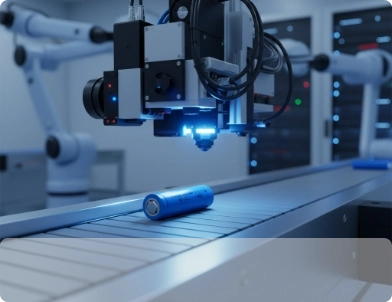
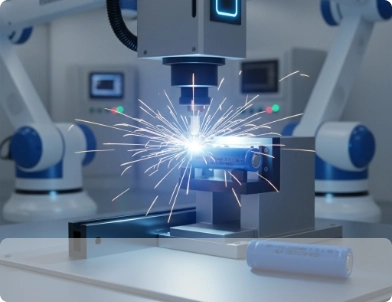
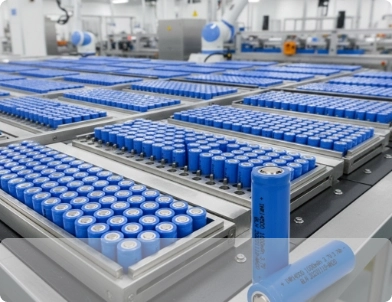
Ufine 14500 Cell VS Generic 14500 Options
A quick procurement-focused comparison to show where this 3.7 volt 1000mah battery stands out.
Ufine 14500
- Consistent 3.7V nominal voltage with low variance under load
- Controlled internal resistance (≤25mΩ) for reliable power delivery
- Lightweight — approx. 20g per cell for compact product design
- Batch traceability and B2B sample support for qualification
- Favorable cycle retention for medium-duty rechargeable products
- Connector and pack-integration guidance available for OEM builds
- Operating range: -20℃ ~ 60℃ (customization options available)
Typical Alternative
- Wider IR variation between cells
- Inconsistent cycle retention across lots
- Limited documentation and weaker supply commitments
- Fewer procurement support options for OEMs
Customization & Integration for 14500 Packs
Practical options for turning individual 14500 cells into tailored power solutions.
- Single-cell supply or pre-assembled 1S modules for quick integration
- Capacity tolerance and matching to support parallel assemblies
- Thermal and mechanical options for packaging and connectors
- Protected cell variants and PCM integration on request
-
01Confirm cell specs and target application constraints
-
02Select matching tolerance and cycle profile for production batches
-
03Choose mechanical termination and connector style
-
04Prototype sample run for fit, performance and safety verification
-
05Scale to production with agreed QA checkpoints and traceability
Battery Specification
-
1. Mechanical Characteristics
Cell 14500 PCM No NTC No Weight appr. 20g Configuration 1S1P -
2. Electrical Specification
Capacity 1000mAh Nominal Voltage 3.7V Energy 2.22Wh Internal Resistance less than 25mΩ Max. Charge Voltage 4.2V Discharge Cut Off 2.75V Max. Charge Current 1000mA Max. Discharge Current 1000mA Standard Charge Current 500mA Standard Discharge Current 500mA Charging Temperature 0℃ to 50℃ Discharging Temperature -20℃ to 60℃ Storage Temp.Range 1 year at -20℃ to +30℃ 3 mos. at -20℃ to +45℃ 1 mo. at -20℃ to +60℃ Cycle life 100 cycles ≥92% 300 cycles ≥88% 500 cycles ≥80% -
3. Cell protection
Overcharge Detection No Overdischarge Detection No Overcurrent Detection No Short protection No
Part 1. Overview of the 3.7 V 1000mAh Cylindrical Battery 14500
The 3.7 V 1000mAh cylindrical battery 14500 is engineered for OEMs and device manufacturers requiring stable electrical behavior, predictable capacity, and a proven cylindrical form factor for compact product integration. Designed for consistent performance in mass production, this 14500 lithium battery offers a balance of energy density, safety, and dimensional efficiency suitable for long-term product lines. For B2B applications where reliability, sourcing continuity, and consistent electrical parameters matter, this cell provides a dependable foundation for scalable device development.Part 2. Key Performance Features of the 14500 Li Ion Battery
Built for industrial and commercial devices, the 14500 li ion battery maintains ≤25mΩ internal resistance, ensuring efficient energy delivery with low thermal rise—critical for tightly packed electronics and continuous-operation products. Its genuine 1000mAh capacity and stable 3.7V output allow engineers to design predictable power architectures, minimizing variability across production batches. With support for 1C charge and discharge rates, the cell accommodates controlled surge requirements in professional handheld equipment, sensors, IoT modules, and portable instruments. The lightweight (~20g) cylindrical structure also simplifies mechanical design and integration for compact hardware.Part 3. Lifecycle Stability & Environmental Performance of the 14500 Lithium Battery
For OEMs prioritizing long service life, the 14500 lithium battery delivers predictable degradation curves—maintaining stable capacity across 100, 300, and 500-cycle benchmarks under recommended operating conditions. This consistency is crucial for B2B customers who rely on accurate lifetime estimations and warranty planning. Its broad temperature performance (charging at 0–50°C, discharging at -20–60°C) and flexible storage tolerances support year-round global deployment, warehousing schedules, and multi-region supply chains. These parameters make it a dependable choice for devices requiring field reliability rather than aggressive high-rate behavior.Part 4. Application Suitability & OEM Integration Advantages of the 14500 Lithium Rechargeable Battery
The 14500 lithium rechargeable battery is optimized for compact devices where energy density, dimensional standardization, and mechanical durability are key. Typical B2B application categories include:- Smart home and IoT devices
- Industrial and handheld measurement tools
- Portable consumer electronics
- Flashlights and compact lighting solutions
- Wireless communication and sensing modules
FAQs
-
What makes the 3.7 V 1000mAh 14500 battery different from other 14500 cells?
This 3.7 V 1000mAh 14500 cell offers lower internal resistance, more stable 1C performance, and tighter batch-to-batch consistency compared to standard 14500 lithium batteries, making it more suitable for OEM production and compact device integration. -
Can this 14500 li ion battery support high-drain or surge-current applications?
Yes. This 14500 li ion battery supports controlled 1C discharge, enabling it to handle short bursts of higher load commonly required in handheld instruments, sensors, and IoT devices without causing thermal spikes. -
How long does the 3.7 volt 1000mAh battery typically last in OEM devices?
Under recommended conditions, the 3.7 volt 1000mAh battery maintains stable capacity retention for up to 500 cycles. Actual lifespan depends on discharge depth, charge rate, and thermal environment during use. -
What devices commonly use the 14500 lithium battery format?
The 14500 lithium battery is widely used in compact consumer electronics, industrial tools, IoT nodes, smart home devices, flashlights, and portable measuring equipment thanks to its stable voltage curve and lightweight cylindrical design. -
Is the 14500 lithium rechargeable battery safe for continuous-use devices?
Yes. With low internal resistance and a controlled thermal profile, this 14500 lithium rechargeable battery supports long-duration operation in devices that run daily or continuously, as long as thermal management follows standard lithium-ion guidelines. -
Can the 3.7 V 1000mAh 14500 battery be customized for specific B2B applications?
Yes. We offer customization options for PCM/BMS integration, wire and connector choices, shrink-wrapping, paired packs, and performance tuning to match your device’s voltage, size, and cycle-life requirements.
Ready to Power Your Project?
We’ll help you design the perfect power source — tailored to your voltage, capacity, size, C-rate, and performance needs.
Contact Us NowWhat Our Customers Are Saying
We love hearing from you! Your experiences help us improve and inspire others. Check out what our happy customers have to say about our lithium batteries—share your thoughts with us too!
Latest Articles
About Lithium Battery Industry News

What is the Difference Between Silver Zinc Battery vs. Lithium-ion Rechargeable?
Compare silver zinc and lithium-ion rechargeable batteries: energy density, cycle life, safety, cost, and uses in drones, medical devices, EVs, and electronics.
2025-12-10 Ufine
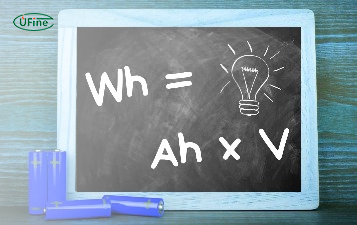
What are Watts and Watt Hours in Battery?
Understand watt vs watt-hour in batteries: key differences, how to calculate capacity, and why they matter. Includes free comparison table.
2025-12-10 Ufine

Best 10 Blood Pressure Monitor Battery Review: Finding the Most Reliable
Are you looking for a reliable Blood Pressure Monitor battery? Here is a complete guide with the top 10 best blood pressure monitor batteries.
2025-12-10 Ufine


